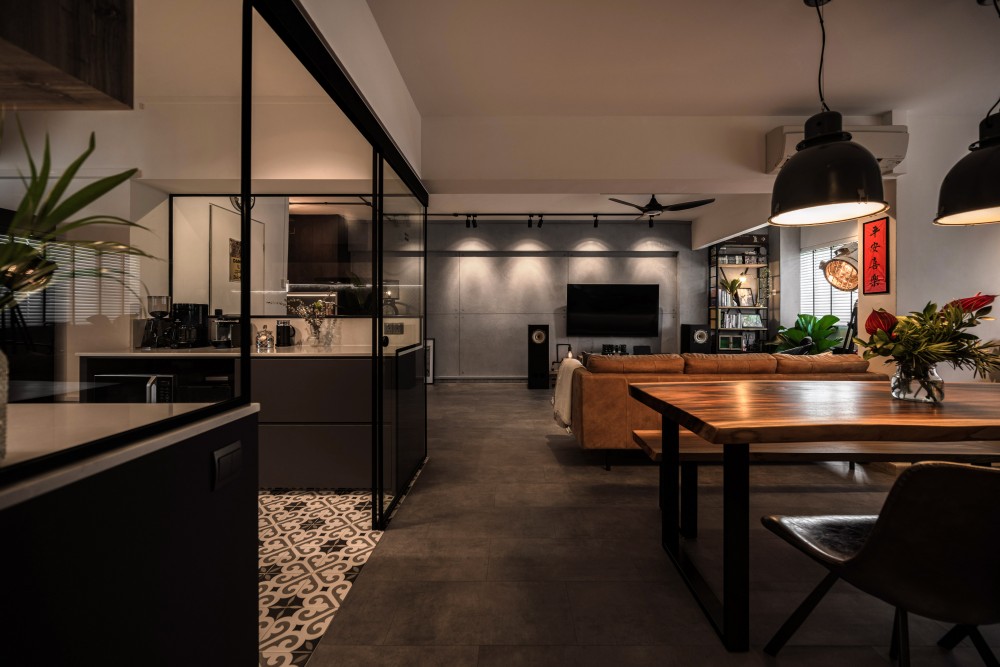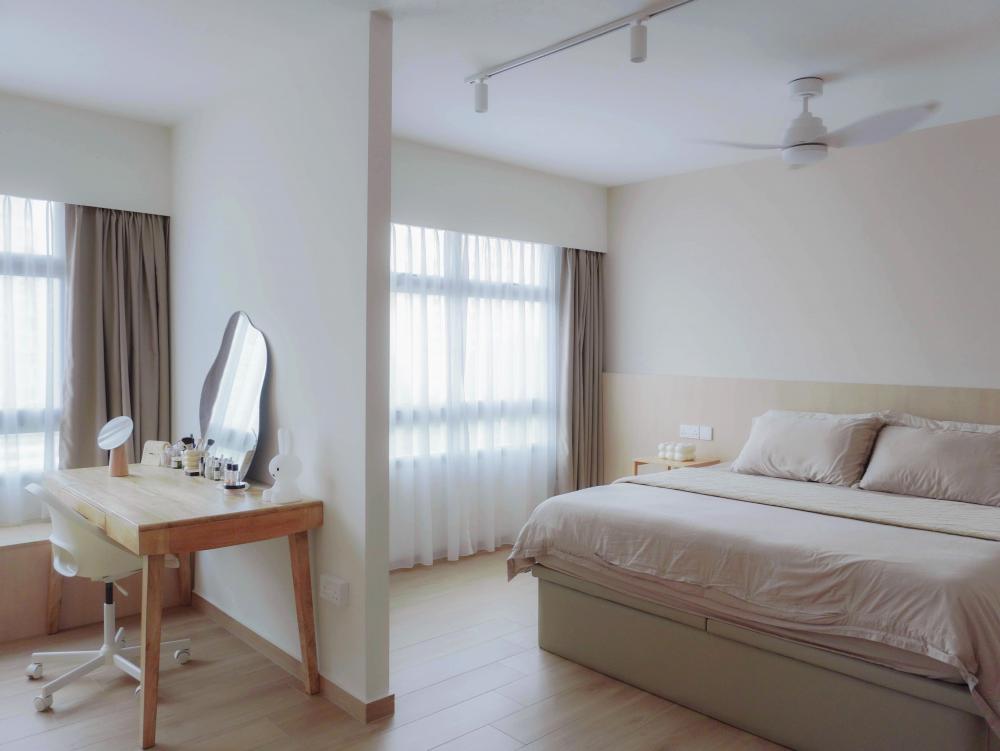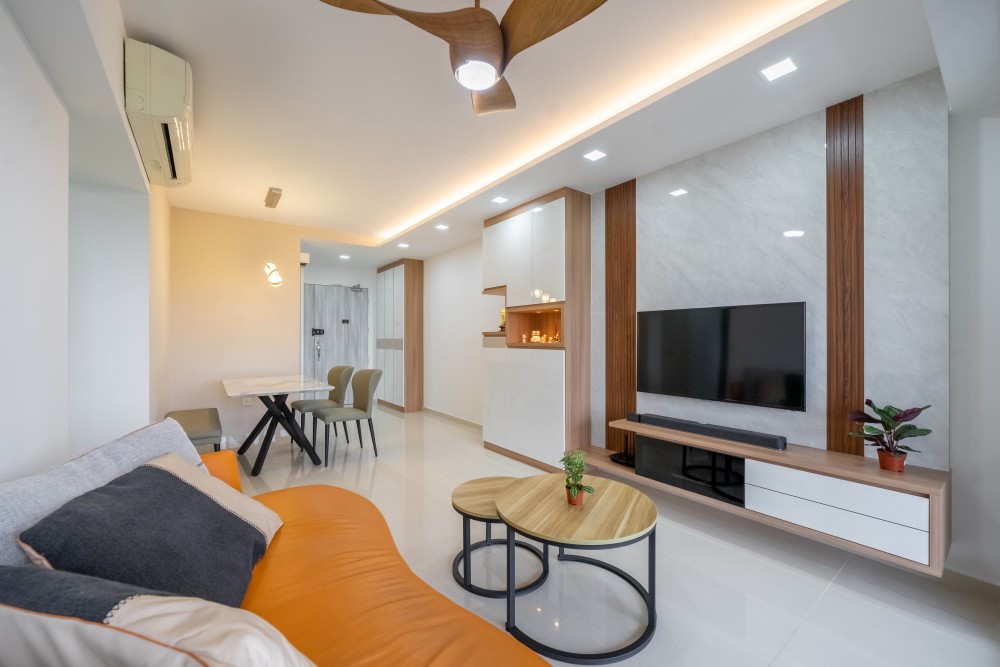How To Decorate With Plants In Singapore
So you’re looking to add more plants to your home, and you’re not sure where to get started.
What type of plants are low-maintenance?
What plants can thrive in Singapore’s climate?
Where should you go to buy your plants?
In this guide, we’ll answer all those questions, and more.
Let’s jump right in!
Why Decorate With Plants?
There are a ton of benefits that come along with having plants in your home. For instance:
- They purify the air
- They boost your mood
- They help improve humidity
- They increase productivity
- They’re ~aesthetic~
Firstly, plants are natural air purifiers – they filter out toxins and pollutants from the air, and create a healthier living environment.
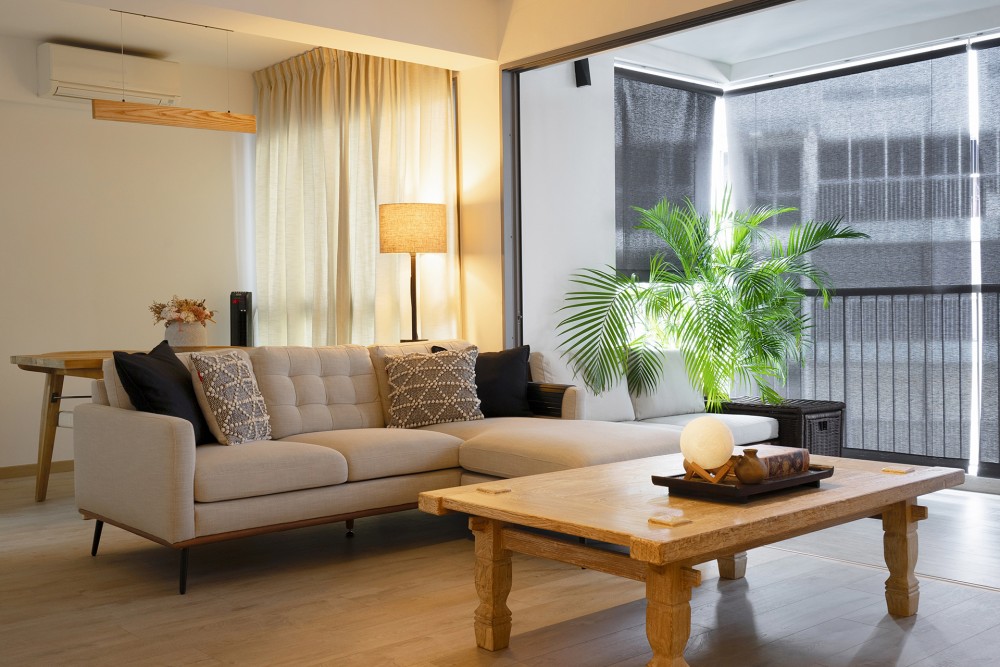

Pasir Ris Drive 1 ($32,000) by Great Oasis Interior Design
Some plants, such as snake plants and spider plants, are particularly effective at removing common indoor pollutants like formaldehyde and benzene.
Next, plants can also help to boost your mood.
Studies have shown that being around plants can have a positive impact on your mood and mental health. Plants can help reduce stress levels, improve cognitive function, and even alleviate symptoms of depression and anxiety.
Next, plants help to improve indoor humidity as well.
Yes, we know that it’s humid enough in Singapore – but what about all the folks who keep their windows closed and blast their air-conditioning for the entire day?
If you’re heavily reliant on air-conditioning, this means the air in your home is probably dry. Here, plants can help improve indoor humidity levels by releasing moisture into the air through a process called transpiration.
Next, plants may also help to increase productivity.
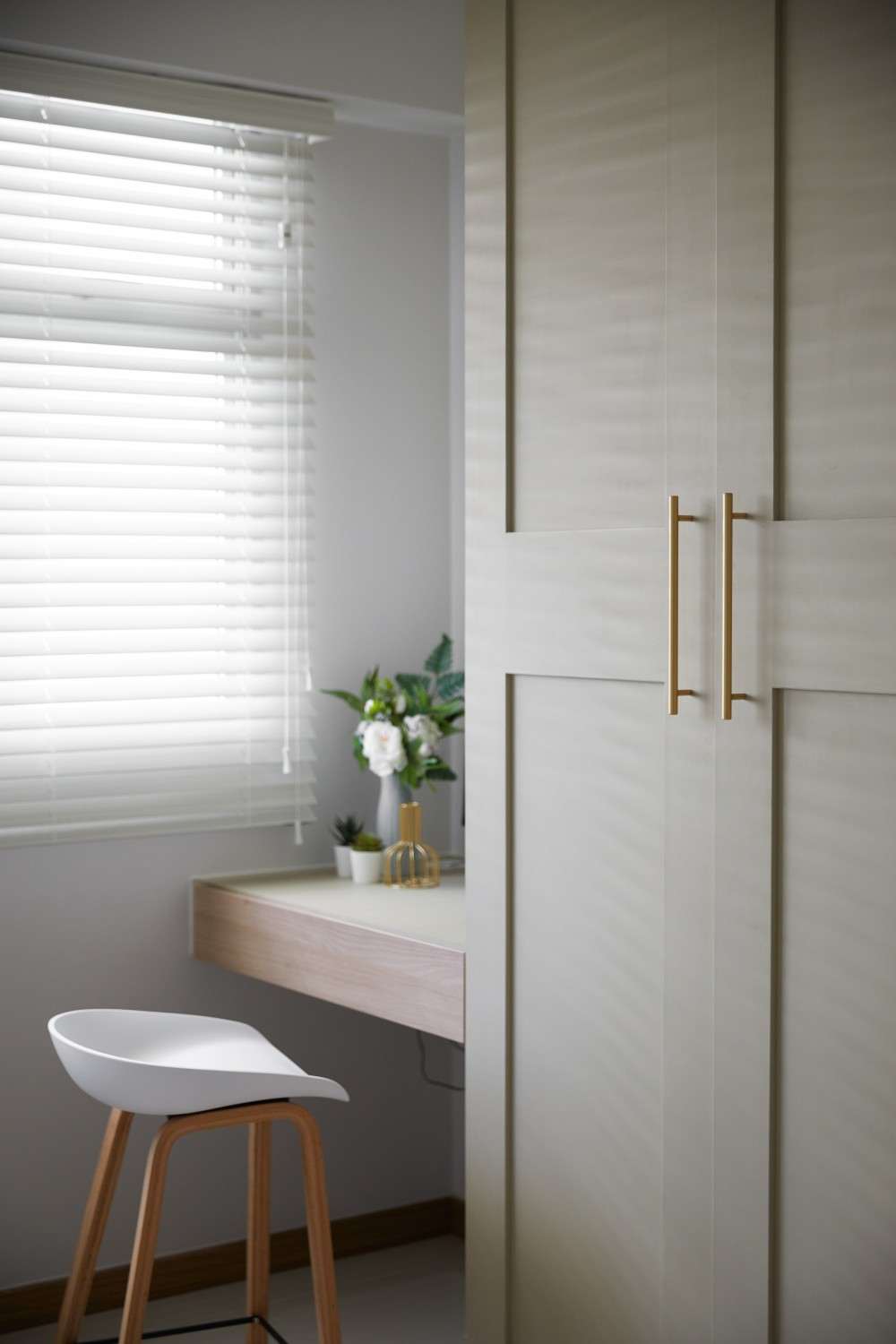

Bedok South Road ($42,000) by MET Interior
This might sound too good to be true, but research shows that workers in offices with plants are more productive, take fewer sick days, and report feeling happier and more energized at work.
Finally, plants help to add natural beauty to your decor.
One of the most obvious benefits of having plants in your home is the natural beauty and aesthetic appeal they can bring to your living space.
There’s no denying it – having some greenery in your home livens up the entire space, and makes it feel more cozy.
Choosing The Right Plants For Your Space
When choosing plants for your home, it’s important to consider the lighting and temperature conditions of your living space.
Different plants have different needs when it comes to light and temperature, and selecting the right plants for your home’s unique environment can help ensure their long-term health and survival.
First, lighting is one of the most important factors to consider when selecting plants for your home.
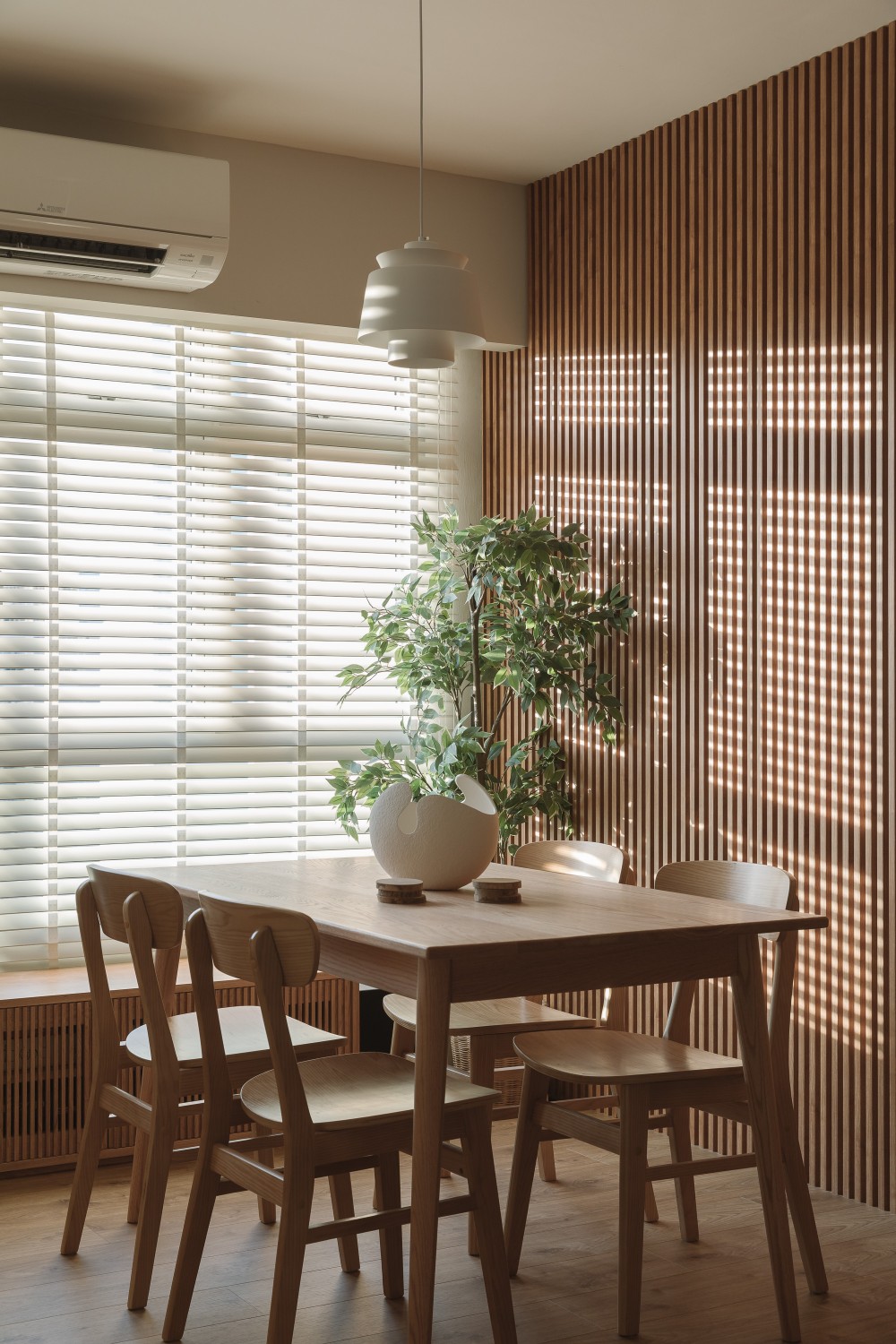

528C Costa Ris ($51,000) by The Interior Lab Pte Ltd
Some plants require direct sunlight to thrive, while others prefer indirect or low-light conditions.
If your home receives plenty of natural light, or you have a balcony where you can house your plants, you may want to consider plants like snake plants, pothos, or spider plants that can handle direct sunlight.
If your home has limited natural light and you don’t have a balcony, you may want to consider plants like peace lilies or ZZ plants that can thrive in low-light conditions. These plants are often recommended for bathrooms, basements, or other areas of the home that may not receive much natural light.
Temperature is another important factor to consider when selecting plants for your home.
Some plants thrive in warm, humid environments, while others prefer cooler, drier conditions.
Since you’re living in Singapore where it’s humid all-year round, consider plants like Alocasia and Philodendron – these thrive in warm, humid conditions.
Running in the same vein, we recommend steering clear of plants that are more suited to colder climates (examples include lavender, and many types of flowers such as peonies, lilacs, etc).
Incorporate Plants Into Your Existing Decor
Plants can be incorporated into your home decor in many different ways, from placing them on shelves or tabletops to hanging them from the ceiling or walls.
Firstly, one of the easiest ways to incorporate plants into your home decor is by placing them on shelves or tabletops.
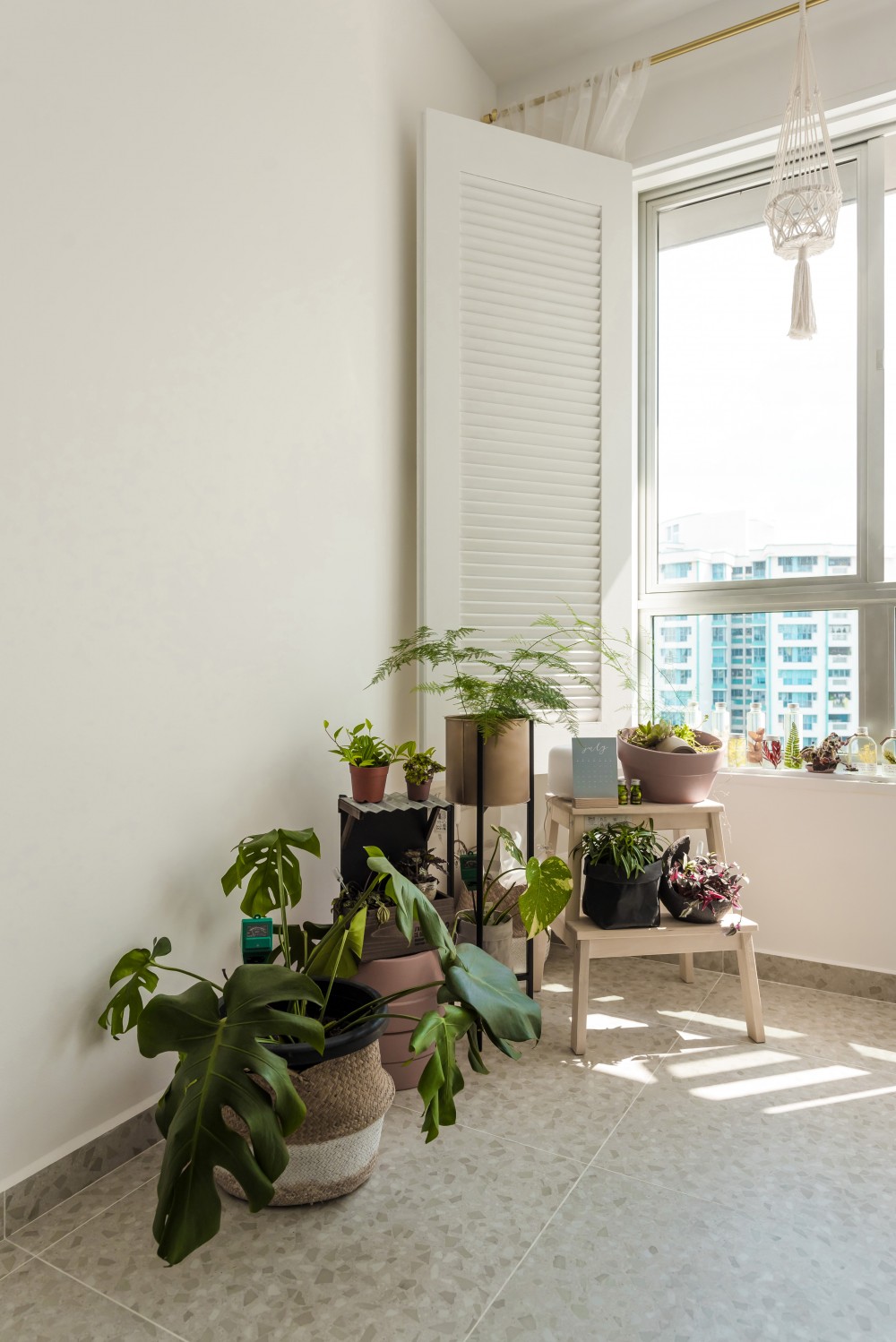

Sembawang Cres ($29,000) by Homies Design
You can use a mix of small and large plants to create a layered effect, or group plants together for a more cohesive look. You can also use different types of planters, such as ceramic pots, glass terrariums, or woven baskets, to add visual interest.
Next, another fun way of housing your plants is to hang them from the ceiling or walls.
Here, you can use macrame plant hangers, wire baskets, or wall-mounted planters to add greenery to your space. Hanging plants can be especially effective in rooms with limited floor space, such as bathrooms or small bedrooms.
Finally, consider using unique planters or baskets to complement your existing decor.
For example, if you have a bohemian-style living room, you could use woven baskets or brightly colored ceramic pots to hold your plants. If your decor is more minimalist, you might opt for simple white or black planters.
Experiment With Vertical Gardens
Singapore’s limited living space means that many homeowners have to get creative when it comes to incorporating plants into their homes.
One popular trend is vertical gardening, where plants are grown on vertical structures like trellises or living walls.
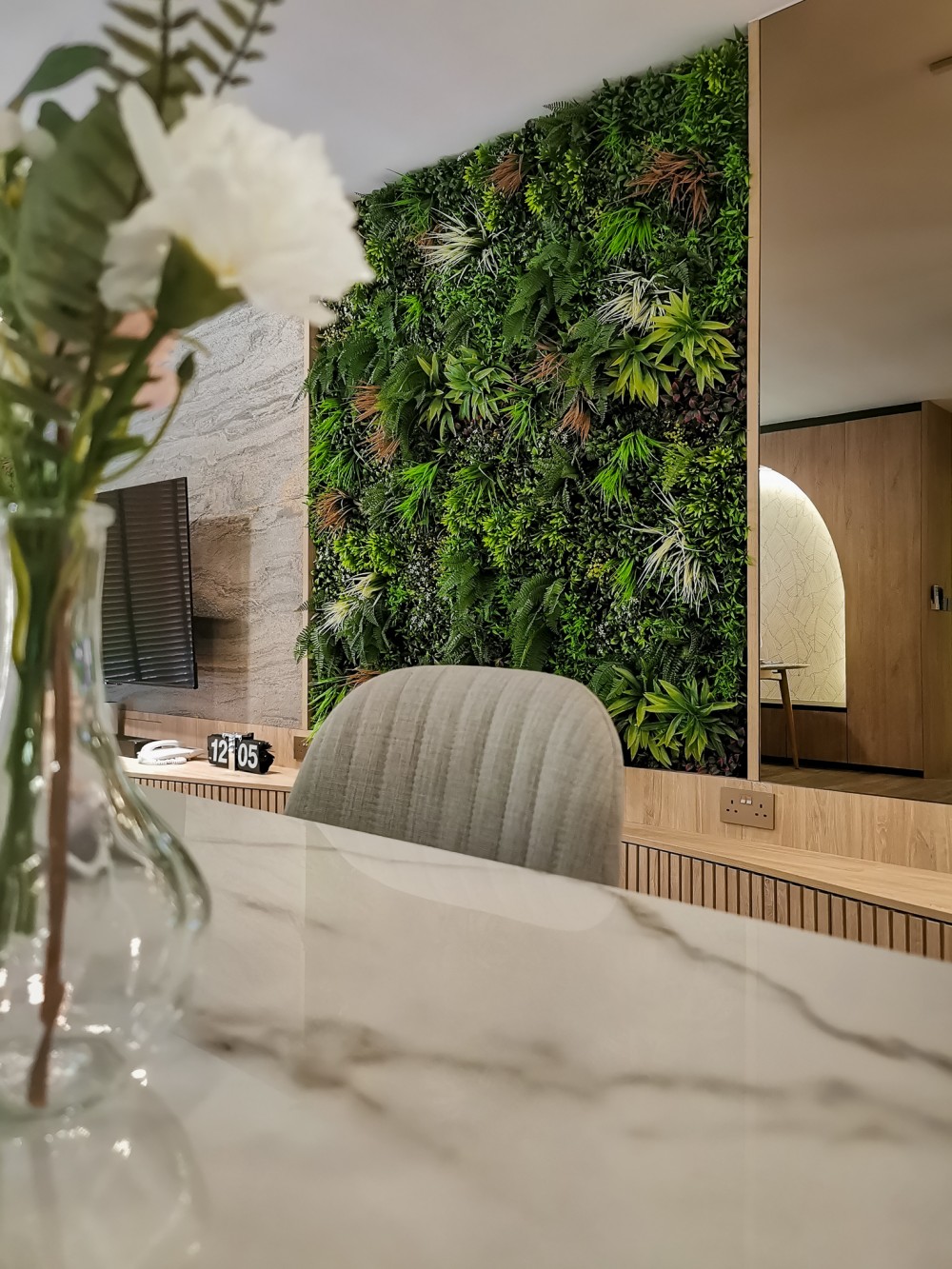

289D Punggol Place ($100,000) by Elysian Design Studio
If you’re wondering what a living wall is, this is essentially a vertical garden made up of a series of plants that are grown in a modular system attached to a wall. These walls can vary in size, from small installations in homes to large-scale installations in public spaces.
The caveat? Living walls can be quite expensive to install as they require specialized materials, irrigation systems, and maintenance.
Additionally, if you’re planning to get someone to help you maintain the living wall, the cost can add up over time.
However, there are options for DIY living walls that can be more affordable, such as using modular systems or building a simple trellis with climbing plants (just do a Google search for more information).
And as for how easy it is to upkeep vertical gardens, it all depends on the type of plants you use.
If you build a trellis with low-maintenance plants that are easy to take care of (more on this in the next section!), then your vertical garden will be easy to maintain.
Plants To Buy: Low-Maintenance Plants
If you don’t have the best track record with plants (or if you’re a complete beginner!), start here.
These plants are low-maintenance, easy to care for, and hardy:
- Snake plant
- Money plant
- Spider plant
Firstly, there’s the snake plant (this is also known as Mother-in-law’s Tongue because of their long, pointed leaves that resemble a tongue.)
You’ll definitely recognize this plant by sight even if you don’t recognize it by its name – it’s basically the plant that everyone gets when they move into their BTO flat and start adulting.
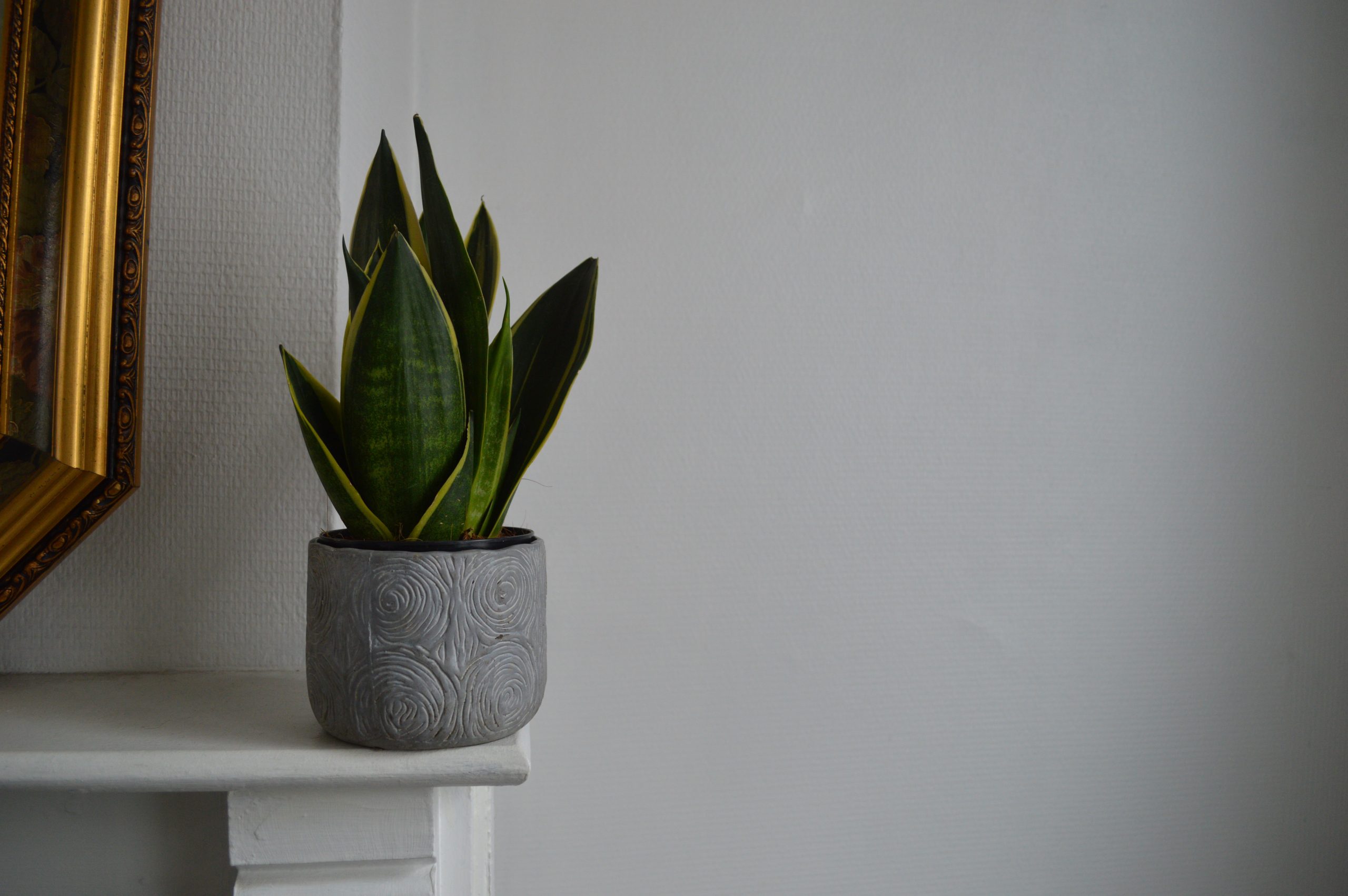

And here’s the thing about this plant – it’s really hardy.
Snake plants can tolerate a range of lighting conditions, from low to bright, indirect light, and they can also survive on a wide range of temperatures, including both dry and humid conditions.
Plus, snake plants require minimal watering. They can be watered every two to three weeks – so even if you’re off holidaying in Paris, you won’t come home to a dead plant on your hands 😉
Finally, snake plants propagate easily from cuttings, so if you already know someone who has this plant, just ask them for a cutting.
Next, there’s the money plant, which is another highly popular plant for beginners.
These plants are really pretty – their leaves are heart-shaped and glossy, and depending on the variety you have, they may either be green and yellow, or green and white.
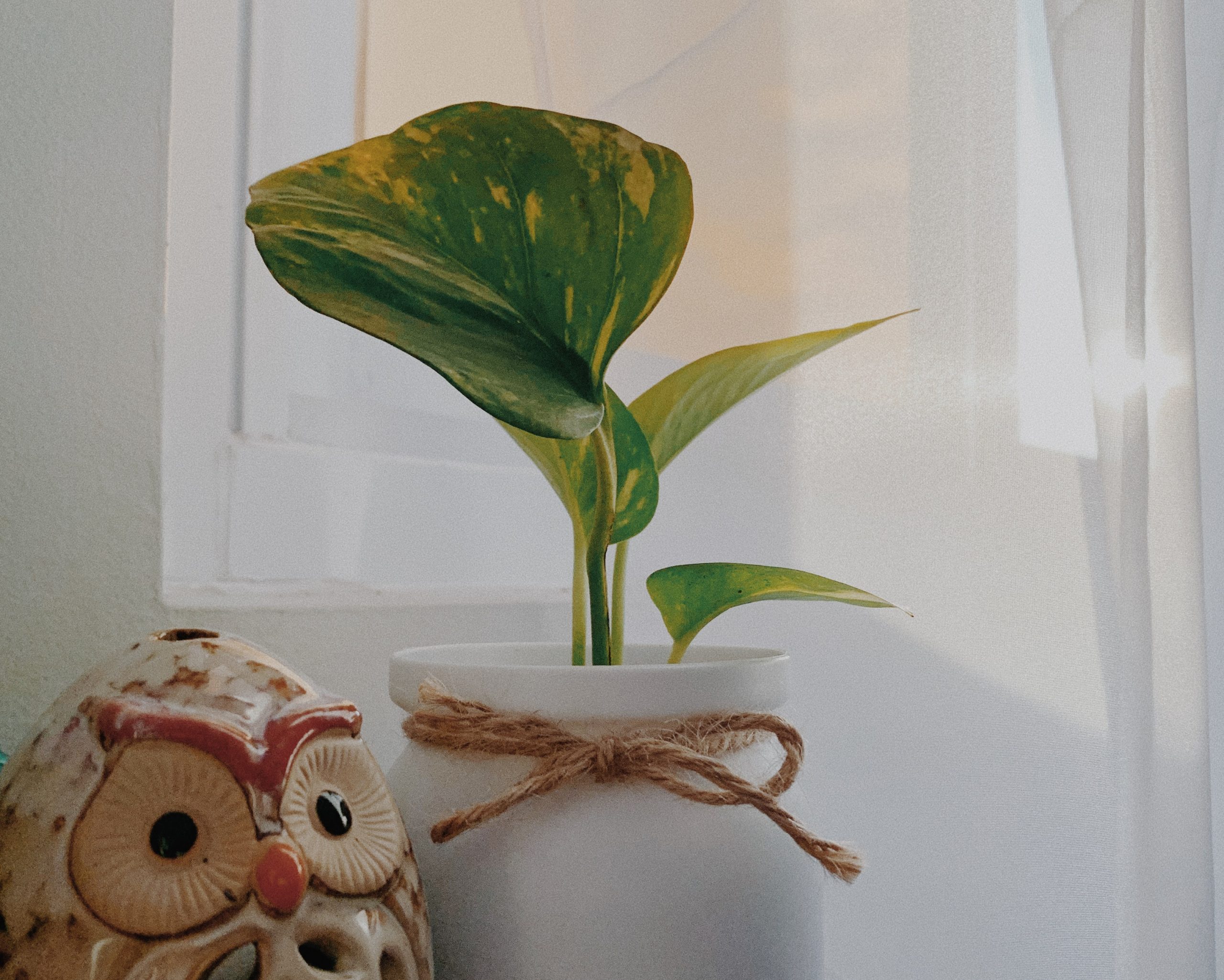

Like snake plants, money plants can tolerate a wide range of lighting conditions and temperatures.
The plant can also be grown in water, making it an ideal choice for those who don’t want to deal with soil or potting mix. To do this, simply place the cutting or the entire plant in a vase or jar filled with water, making sure that the roots are submerged. Change the water every two weeks to prevent the water from becoming stagnant.
Because money plants are so easy to propagate, you can just keep creating new plants from your OG plant. Just cut a stem with a few leaves and root it in water or soil, and soon you will have a new plant!
Finally, spider plants are really low-maintenance as well.
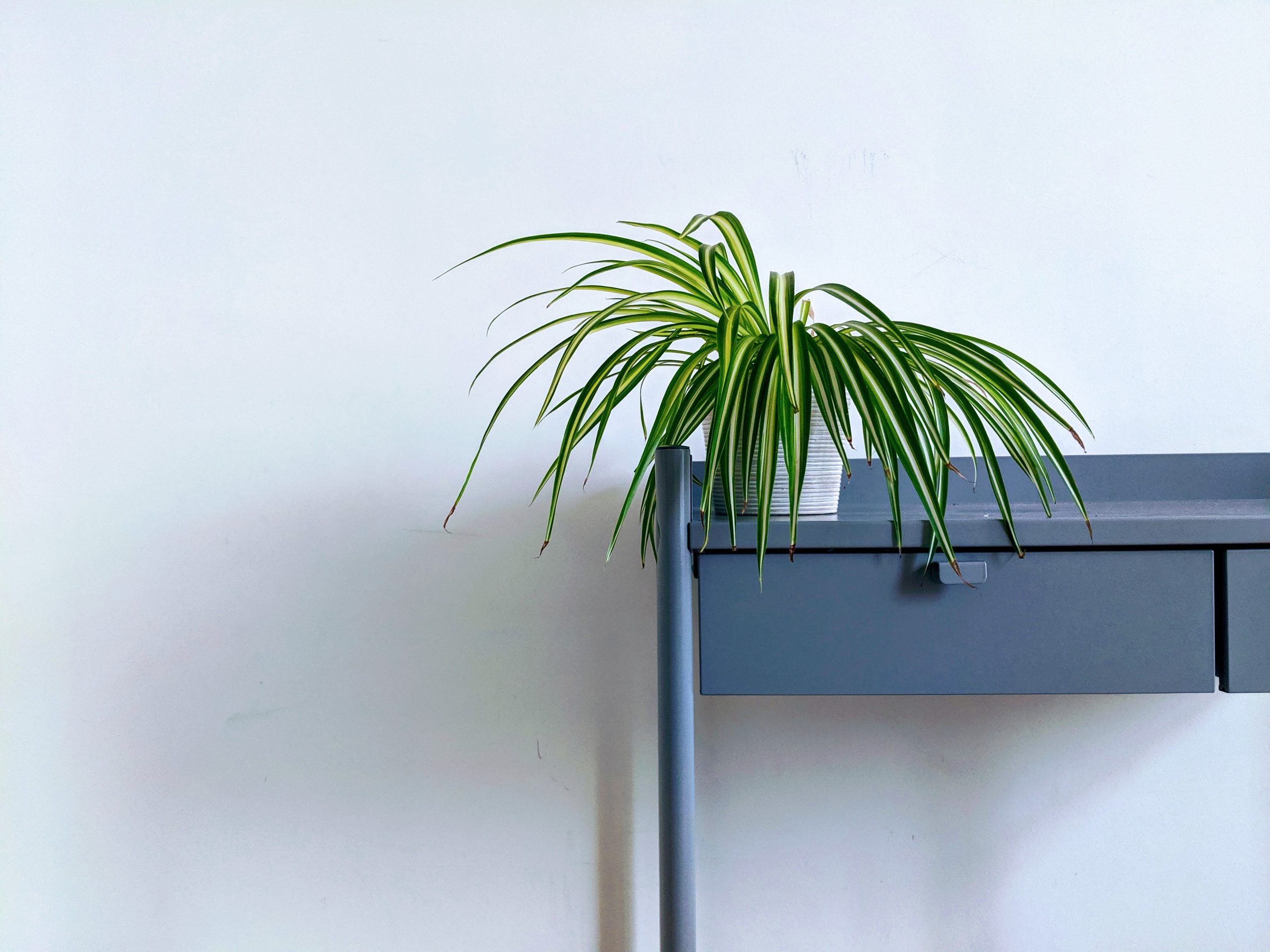

The plant gets its name from the long, thin leaves that resemble spider legs. The leaves can be green or variegated with white or yellow stripes.
And like the previous two plants we discussed, spider plants aren’t fussy when it comes to lighting and temperatures – they can survive in a wide range of conditions.
Spider plants can grow up to 60cm long, so you can display them on shelves, tabletops, or in hanging baskets – they’ll create a beautiful cascading effect with their long, thin leaves.
Plants To Buy: Statement Plants
If you’re looking to make a bold statement with your plant decor, consider investing in a large, statement plant. Here are a few ideas:
- Fiddle leaf fig
- Monstera
- Areca palm
Firstly, the fiddle leaf fig has become a staple in many modern homes due to its large, glossy leaves and striking silhouette.
This plant can grow up to 180cm tall. and can add a touch of drama and sophistication to any room.
It’s important to note, however, that the fiddle leaf fig can be quite finicky and requires some TLC (tender loving care) to thrive. We’d recommend this for folks who have some experience in taking care of plants, but you might want to choose something else if you’re a complete beginner.
Next we have… the Monstera!
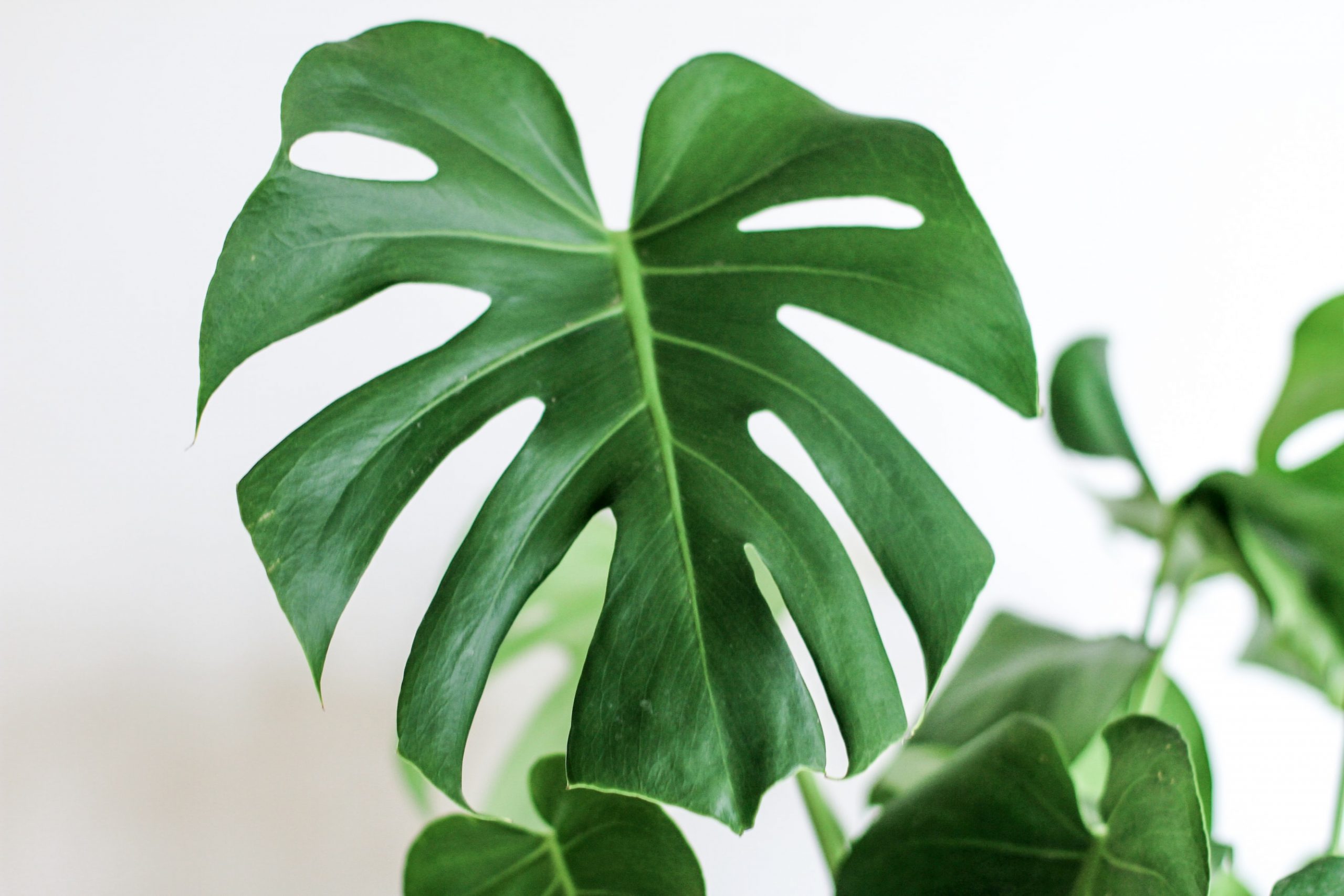

This is a tropical plant that’s commonly found in Singapore, and across Southeast Asia.
The Areca Palm features long, feathery fronds and can grow up to 180cm tall.
It’s a pretty versatile plant that would look good in multiple homes, but if you happen to be going for a colonial vibe, the Areca palm is perfect for that.
Fun fact: the palm was popular during British colonial times and was often planted in gardens and parks in Singapore, as a symbol of luxury and status.
Underwatering? Overwatering?
So you’ve got your plants, you’re super excited to become a plant mama (or plant dad), buuut then your plants start looking like they’re not doing so well.
What’s the problem? Are you overwatering them? Are you underwatering them?
Here’s how to find out:
- Check the soil moisture
- Look at the plant leaves
- Check the drainage
Firstly, checking the moisture level of the soil is one of the most reliable ways to determine if you’re underwatering or overwatering your plant.
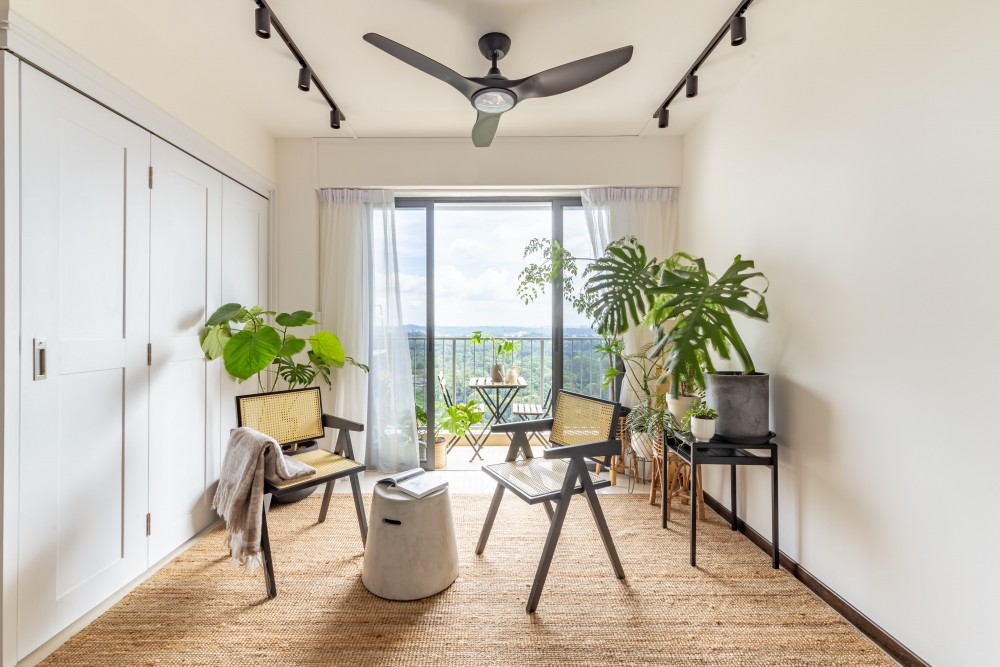

95 Dawson Road ($35,770) by Livspace
To do this, stick your finger about an inch into the soil.
If the soil feels dry or barely moist, it may be a sign that you’re not watering the plant enough. If the soil feels consistently wet or waterlogged, it may be a sign that you’re overwatering the plant.
Of course, do take note that different plant species have different watering needs. Some plants prefer consistently moist soil, while others prefer to dry out slightly between waterings.
For example, if you have a cactus with dry soil, that’s totally fine – here, dry soil doesn’t necessarily mean that your cactus is underwatered!
Soil moisture aside, pay attention to the plant’s leaves.
If the leaves are drooping or wilting, it may be a sign that the plant is not getting enough water. The leaves may also be dry and brittle to the touch.
If the leaves are yellowing or developing brown spots, it may be a sign of overwatering. Overwatering can cause the roots to rot, which can prevent the plant from taking up water and nutrients properly.
Finally, check your plant’s drainage as well.
Proper drainage is essential for healthy plants, and it can also help you determine if you’re overwatering your plant.
If you notice excess water pooling in the saucer or container beneath the plant, it may be a sign that you’re overwatering the plant. It’s important to empty any excess water from the saucer after watering to prevent the roots from sitting in standing water.
Bottom Watering: A New Watering Technique To Try
Ever heard of bottom watering before?
The technique is pretty self-explanatory: you water your plants from the bottom. Basically, you let your plants sit in a tray of water, and suck up all the water they need.
If you’re not sure if you’re overwatering or underwatering your plant, bottom watering is a helpful technique, because it allows the roots to soak up water from the bottom of the pot, rather than from the top.
When you water your plant from the top, the water can easily run off the surface of the soil and drain out the bottom of the pot, without reaching the roots. This can create pockets of dry soil, which can lead to underwatering. But with bottom watering, there’s no such problem!
With bottom watering, you fill a tray or saucer with water and place the plant pot in the tray, allowing the water to be absorbed from the bottom.
This ensures that the water reaches the roots – like we’ve just mentioned, this prevents underwatering. At the same time, bottom watering also helps to prevent overwatering by allowing the plant to absorb only the water it needs. If there’s any excess water, it can simply be discarded from the tray or saucer after the plant has had a chance to absorb what it needs.
A final word on decorating with plants
Now that you’ve reached the end of this article, you’re practically an expert on plants! 😉
It may be intimidating to get a bunch of plants if you’ve never done so before, but don’t worry.
Start from the low-maintenance plants like Snake Plant, Money Plant, and Spider Plant – those are beginner-friendly and really hard to kill.
Once you’re a bit more familiar with how plants work, and have more confidence, then start shopping around and adding more plants to your collection.
All the best!
Want to check out home renovation projects for more inspiration? Browse houseplant design ideas on Hometrust, or click the button below to get connected with expert designers!
Renovating soon? Let Hometrust recommend the best interior designers.
If you are reading this, you are probably wondering how you can create your dream home.
Here’s the thing, everyone’s needs and requirements for their home renovation is different. A designer that may work for someone else, may not quite work for you.
At Hometrust, we’re here to help match top rated designers, recommended by past homeowners to you through our data-driven and matching algorithm.
Whether you are looking for partial renovation or a full fledge overhaul, we’ll be able to recommend you top designers to match your renovation requirements and lifestyle.
Recommendations and free and you can simply start by helping us understand your needs below!
Get RecommendationsRenovate safe!
The Hometrust Team

